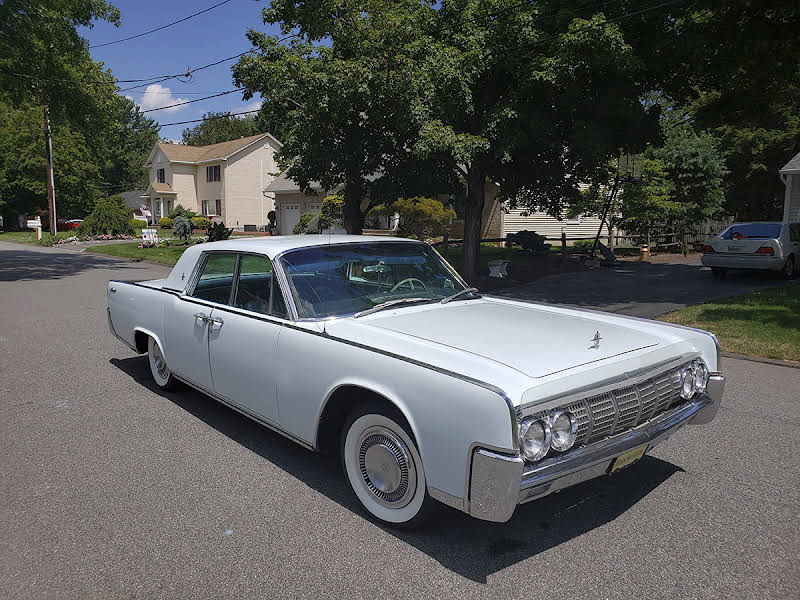
The 2020 Ford Mustang V6 continues the tradition of the iconic pony car, but with a new level of performance and agility. The 2020 Mustang comes in a range of performance levels, from Level 2-5. Read on to learn more about the new car. The price may surprise you! Weighing in at less than $46,000, the 2020 Mustang V6 is the fastest pony car Ford has ever produced.
Performance Pack Level 2,
The Ford Mustang is a popular sports car. However, its performance has significantly changed over the years. Ford announced the resurgence of the Mustang Mach 1 and axed the Shelby GT350 and GT350R. The Performance Pack Level 2 was launched and a new ordering guide has been created. BlueOvalForums was the first to report on the new order book. Here's an overview on the GT changes.
Performance Pack Level 3
Ford Mustang performance pack level 2 is available for the 2019 and 2020 V6 models. This package features 19-inch wheels, a larger radiator, heavier-duty front springs and a Torsen limited slip differential. It also includes retuned steering, ABS, and retuned steering. This package is available for any Mustang. A performance pack level 2 is available for the 2019 Mustang GT. It comes with 700 horsepower and will set you back between $35,000 and $40,000.
Performance Pack Level 4
The new Ford Mustang is getting more performance. Performance Pack level 4 increases the torque in the front wheels to give the car more control and a better feel on roads. The car's handling is better with a flatter turn-in and more responsive. The car's increased weight does not affect its civil ride quality. You can add optional Recaro sport seating.

Performance Pack Level 5
Ford Mustang's 2018 model year saw a major overhaul with the introduction Performance Package 2. This package, which was already available on the 2015 model of Ford Mustang, includes many track-focused features. Ford has confirmed that the package is not available for the 2020 Mustang V6. Ford has not disclosed any details regarding the package's status but it is thought that it will be ending after the 2021 model years.
Performance Pack Level 6
The 2020 Mustang V6's Performance Pack Level 6 includes a wide range of features. This package includes new tires and an engine that is more powerful. Additionally, it has larger brakes and a front splitter that is redesigned. The rear swaybar measures 21.7 millimeters. All these improvements come at an added cost. To learn more about the performance package, read on.
Performance Pack 7
Ford's new Mustang V6 engine is the most powerful Ford has ever used in a pony car. Its V6 engine produces a healthy 345 horsepower and a peppy 310 pound-feet of torque. A Performance Pack allows you to add upgrades to the base Mustang and allow you to modify the car to your specifications. Performance packs can be added to the cost of the car by adding a variety optional upgrades. These may add up as high as $5,000.
Performance Pack Level 8
The Performance Pack Level 8 for 2020 Mustang V6 adds some serious upgrades to the vehicle. This package features new front springs and a revised rear sway bar, as well as upgraded brakes. Larger wheels are also included. It's also available as a V6, EcoBoost, and GT trim. It can cost nearly $1500 more than the original price. The new version includes revised chassis tuning, bigger front rotors, and magnetic ride dampers.
Performance Pack 9
Ford Mustang V6 is a powerful vehicle. This car can reach 60 mph in just 3.5 seconds with the High Performance Package. The Performance Pack Level 9 upgrade adds 19x9inches machine-faced aluminum tires with 255/40R high quality summer tires, a blacked hood, and unique 2.3L High Performance Package badges. A blacked-out Mustang GT hood is available with a tribar pony badge, metallic gray stripes and a tri-bar pony emblem. The engine features a tuned exhaust note, and a fully-active quad-tip exhaust.

Performance Pack Level 10
The 2020 Mustang V6 features a few additional upgrades over the previous model, including a performance pack. The $1,995 handling package includes an upgraded suspension system and aerodynamic components. The car receives more aggressive pads on its brakes. Larger wheels and sticky tires offer a firmer ride. Overall, the new V6 is faster, sexier, and more fun to drive.
Performance Pack Level 11
Ford Mustang now has a Performance Pack Level two that is very similar to the GM Camaro 1LE. The new Performance Pack Level two features retuned steering and revised aero. It also has a lower ride height. It's a welcome addition for the Mustang lineup. These are the main differences. These differences will be covered in a moment. Ford hasn't given pricing details for the Performance Pack Level two yet.
FAQ
What qualifications does a truck mechanic need?
While you may not have the formal qualifications to perform this job, your skills are well-rounded in working on engines and trucks. Your knowledge is valuable as you are able to quickly diagnose problems and work efficiently.
Your knowledge of diesel technology will allow you to identify the parts that are required to fix our vehicles.
How can I fix my car as a hobby?
Why not make it a hobby if you're interested in cars? You could repair them yourself, buy parts for them and sell them. Or just have fun with them. It's a fun hobby that you can do if it interests you.
It's not an easy task to make this a full-time job. It takes a lot of dedication and hard work. You'll also need to invest a lot.
You might not have a compelling reason to get involved in the car industry.
Are you looking for a career as an automotive mechanic?
If you are determined to excel, the automotive industry offers many opportunities. Working hard and learning from others is the best way to be successful in this field.
Because you will be spending most of your time communicating with customers and employees, you will need excellent communication skills. It's important to be flexible and willing to travel. This will make commutes difficult.
Consider taking classes at local universities or community colleges if your goal is to pursue a career in the automotive industry. Many schools offer programs specifically designed for students interested in auto repair, sales, or customer service.
Studying mechanical engineering is an option if you're interested in pursuing a degree. It is possible to earn a bachelor’s degree in only four years.
Many employers will hire graduates straight out from school. It's a smart idea to begin looking for work while you have the opportunity to study part-time.
After you've finished your education, it's likely that you'll need to go through some training before you can be hired as an auto technician.
This means that you will need to pass tests such as the Automotive Excellence (ASE) certification exam. This exam covers topics such as engine maintenance, brakes and suspension.
After passing the ASE test you can apply for a National Institute for Automotive Service Excellence (NIASE) license.
A license permits you to repair private vehicles. In exchange, you'll receive compensation based on the number of services performed.
Not all states require licensing. However, if you plan to work outside your home state, you'll need to obtain a license.
Some states don't issue licenses until after completing a certain amount of training. If this applies to you, then you may need to find another option.
Is it difficult to become a mechanic apprentice
It's not simple, but you can learn quickly and there are many avenues for advancement.
You must have patience and perseverance. You will also need to be able fix cars, trucks and motorcycles.
Customers and relatives can exert a lot on you. However, you shouldn't be forced to make difficult decisions.
It could be a great job choice if you love fixing cars. This is a job that allows you to earn a decent income and grow your business.
You might choose to take a different route. Consider becoming a technician.
This is where you use your technical skills to support other workers. You could help technicians troubleshoot problems or teach them new techniques.
Another option is to become a service advisor. Here, you'll provide advice and assistance to customers when they bring their cars to a garage.
The decision you make will depend on what you are looking for. There are many options to choose from, and it is up to you which one suits you the best.
How long is an automotive mechanic apprenticeship
An automotive mechanic apprenticeship takes around three years to complete. The apprenticeship includes two years studying at school and two more as an apprentice. The first year of training is spent in the trade. This includes theory and practical skills as well as safety procedures. You'll also learn the safe and efficient use of tools during this first year. After the first year, a second year will be spent on-thejob training. This year you'll get experience in different trades. You'll have the opportunity to attend formal courses during these periods too.
The final year of the program is spent gaining qualifications and becoming certified in the field. These include NVQs or National Vocational Qualifications. These are earned after passing exams that cover specific topics in the industry. Additionally, HNCs are Higher National Certificates that cover general subjects such management, customer service, and business administration. City & Guilds certificates may be available for those who are interested in becoming qualified in specific trades.
What are the requirements for an automobile technician?
You must have high school, or GED, and be able to read and write well in English and math. Additionally, you will need to be proficient in reading and writing. To be allowed to work, you must pass a written and practical test.
Statistics
- According to the BLS, total auto technician employment is expected to exceed 705,000 by 2030. (uti.edu)
- The U.S. Bureau of Labor Statistics (BLS) reports that the job outlook for automotive service technicians and mechanics is expected to decline by 4% from 2019 to 2029. (indeed.com)
- 52% of Mechanics in the United States think their salaries are enough for the cost of living in their area. (indeed.com)
External Links
How To
How to properly diagnose and repair your vehicle
You should first examine the symptoms your car is showing to determine if it requires repairs. Follow these steps to properly diagnose your vehicle.
-
Check engine lights. Inspect the dashboard light indicators. These include the engine lights, the oil pressure gauge and the battery light indicators. The RPM gauge and coolant temperature gauge should also be checked. If any of them have been flashing for several days, it may mean something is wrong with your vehicle.
-
Examine the treads of the tires. Tires that are worn can cause issues with handling and braking. You should inspect the treads on your wheel. They should be clean, and they should be smooth. To do this, remove the wheels and take them out. You can check the tread wear with a flashlight.
-
Check the level of brake fluid. You should always keep track of the amount of brake fluid in your vehicle. This ensures that your brakes work properly. Low brake fluid levels could cause your brakes to fail when you apply pressure.
-
Check the suspension system. Vehicles usually have a suspension system that helps absorb shocks and vibrations while driving. It allows for better control, smooth acceleration, and deceleration. If your vehicle has a suspension problem, it might feel wobbly or shake uncontrollably. To test whether your vehicle has a suspension issue, try putting weight on the front or rear axle and observe the movement.
-
Examine your steering column. The steering columns are what connect the steering knob to the rest. Steering columns can be damaged by accidents. If yours feels loose or shaky, you should replace it.
-
Observe the exhaust pipe. The exhaust pipes transport gases from the combustion chamber to outside. You can let harmful fumes into your home if your exhaust pipes crack or leak. You should also fix any bent tailpipes immediately.
-
Check under the hood. Look underneath your hood to see if anything looks strange. Your engine could be leaking fluids. Also, professional technicians should be called if you detect an unusual smell coming out of your engine compartment.
-
Make sure to check the air filter. The outside environment can collect dust and other debris in your vehicle's air filters. A dirty filter can lead to a poor vehicle's performance. Replace your air filter regularly.
-
Make sure you check the fan belt. Your vehicle's fanbel is what connects the engine and the transmission. The engine will not turn if the fan belt breaks. It's easy to replace the belt. You will need a screwdriver, pliers and a pair of pliers.
-
The radiator hose and hoses should be checked. The radiator hose is used to carry water from the radiator to your engine. It can become cracked or damaged and leak hot liquid onto your engine. To repair the hose, you will only need to use a pair needle-nosepliers and a wire brush.
-
Check the windshield wipers. Windshield wipers use electricity to remove snow and rain. If they stop working, streaks could be left on your glass. The solution is to change the washer fluid.
-
Make sure you check the cables. The batteries provide power to the electrical systems within your car. Before you change batteries, disconnect the positive cable. Failure to do so can damage your alternator.
-
Be sure to check your headlights. The headlights provide illumination for the road ahead. It can lead to poor visibility if they aren't working properly. Check the bulbs to see if they've burned out.
-
Be sure to check the lights. If you approach other drivers at night, lights will warn them. You could be distracted and cause an accident if one does not work.
-
Inspect your brakes. Before you collide with another vehicle, brakes will slow down the car. If the brakes fail to work correctly, your car could lose control and collide with another vehicle.
-
Change the oil. The oilkeeps your engine lubricated. This oil helps to prevent metal parts becoming too worn out. It is recommended that the oil be changed every other month.